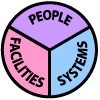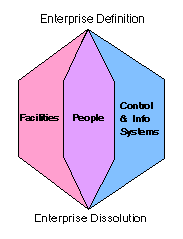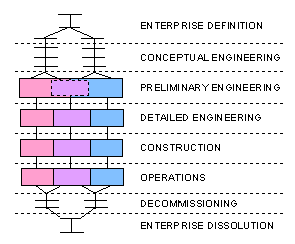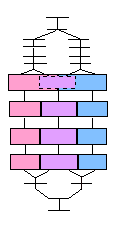
PERA Enterprise Integration Principles |

|
|
|

|
Since the days of the pharohs, inspired individuals have been able to successfully undertake enormous enterprises. However, even today, successful enterprises seem to owe as much to luck as to science. |

PERA provides a structured approach to Enterprise Master Planning and implementation.
PERA also provides a rich set of recommended planning work processes, example documents and reference materials.
 |
There are only 3 major components of any enterprise:
PERA provides an Enterprise life cycle model which clearly defines the roles and relationships among physical plant, people, and information systems. |
 |
Each enterprise may be broken into clearly defined "Phases"The following are crucially important rules of project management associated with project phasing.
|
 |
There are 2 basic rules of project management:
|
It is said that the only way to eat an elephant is to get a lot of help. Similarly, major projects must be divided into smaller parts which can be accomplished in parallel by different teams (Divide and Conquer).
Unfortunately, the more information which must be shared between different teams, the more difficult will be the coordination and management. It is therefore critical to divide the project into sub-projects in a way which minimizes flow of information across sub-project boundaries (Don't cut it where it is thickest).
The PERA Architecture provides natural lines at which to make these divisions.

PERA provides a life cycle model which demonstrates how to integrate Enterprise Systems, Physical Plant Engineering and Organizational Development from enterprise concept to dissolution.
We believe the PERA methodology presents the best alternative for a "GERAM"
or General Enterprise Reference Architecture Methodology. PERA was used as the
basis for ISA 95 and a number of other Enterprise Integration standards.
by Gary Rathwell © reserved